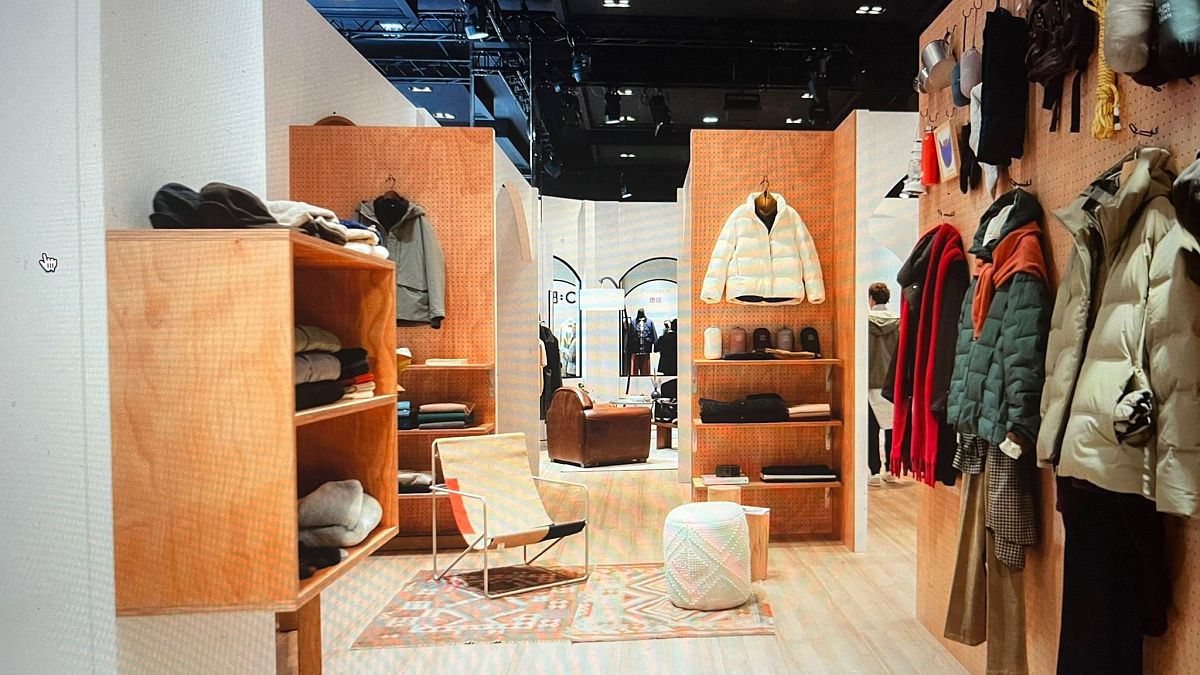Fashion
Science meets fashion: how Uniqlo is changing Europe’s high street

From its compact viral bum bag to its high-tech heat vests, Uniqlo is a prominent player on Europe’s high streets. As the Japanese firm celebrates its 40th anniversary, how is science setting the brand apart from other competitors?
On the final day of Paris Fashion Week, the frenzied speculation about what will be remembered as the season’s biggest trend reached its pinnacle. But at the Pavillon Vendôme, located in one of Paris’ most chic squares, there was something rather refreshing going on.
“Rather than following fashion trends, Uniqlo’s Lifewear is designed for everyone to enjoy wearing in their daily lives ”, reads a sign printed on a wall. The Japanese high-street sensation Uniqlo is celebrating its 40th anniversary with a five-day exhibition digging into the science that lies behind its clothes.
Uniqlo CEO and founder Tadashi Yanai, today ranked as the richest man in Japan by Forbes, launched his brand back in 1984. Today he presides over Uniqlo, as well as heading the Fast Retailing Group, which owns Uniqlo as well as other brands including Comptoir des Cotonniers and Helmut Lang.
Tech at the heart of clothing
Keen to think outside of the box, in 1991 Yanai began to collaborate with Toray Industries, a Japanese chemical company specialised in synthetic fibre. Upon first glance this may seem an unlikely partnership – a fashion brand teaming up with a company specialised in carbon fibres. Nowadays, Toray produces everything from Tour de France bike frames to aerospace materials. However, it is this 25 year partnership which in part lies behind Uniqlo’s global success.
“We combined Uniqlo’s merchandising planning prowess with Toray’s advanced technology and manufacturing clout,” explains Uniqlo CEO Yanai, who travelled to Paris for the opening. “We share information and work together on all processes” he adds.
Heat tech: Transforming moisture into heat
Pushing the boundaries of science and fashion, this collaboration led Uniqlo to launch its infamous heat tech collection in 2003. This became one of the innovation game changers which captured shoppers’ attention and proved a lasting hit. Through using materials which wick moisture from the human body and transform it into heat, this innovation offers optimal warmth from what remains a light piece of clothing.
Heat tech has been incorporated into various clothing lines, namely as an underlayer – an item which is not always visible at first glance. Toray Industries CEO Mitsuo Ohya may be wearing a fancy suit and polished shoes for his trip to Paris but ensures, “I am actually wearing a heat tech top underneath!”.
Uniqlo has previously toured this “Art and Science of Lifewear” exhibition as a pop up in London and New York, calling for shoppers to connect fashion with science. In the same way that many city dwellers have become disconnected with where their produce and vegetables are grown, others lack awareness about the materials and threads used to create clothes. So, why is a Uniqlo coat waterproof? How does the brand’s infamous heat tech work to absorb sweat? What is Uniqlo’s nanosilk – how is it different to real silk?
“Customers are calling for increased transparency about how and where their clothes are made. But this also comes with understanding the materials, threads and innovations behind them”, says Brogan Skidmore, spokesperson for Uniqlo.
Piercing the European market
Uniqlo’s drive to incorporate innovation into clothing may set it apart from other high street shops, but Europe’s high streets are still a fiercely competitive market. A Japanese brand at heart, Yuki Katsuta, the brand’s Global Head of Research and Design remains a key part in the brand’s design process, as well as overseeing collaborations with designers. Collaborations with Japanese designers but also a number of famed French and British ones, from Inès de la Fressange to JW Anderson.
This is a strategy which seemingly works, acting as a pull for many European shoppers. At Uniqlo’s flagship Opéra store, located next to the historic Palais Garnier Opera building, shopper Zeynep Buyukkeser is sifting through piles of T-Shirts. This flagship store became the brand’s first ever French shop when it opened its doors in 2009. “I buy most of my basics here. I find the brand’s collaborations, like its one with Comptoir des Cotonniers very clever. I felt like I was buying a fancy item that I can’t afford but at a Uniqlo price tag.”
Uniqlo generates around 1.3 billion items of clothing per year and despite an ongoing global cost of living crisis, its customer base remains loyal, “shoppers are attracted to Uniqlo because they want to find beautiful quality pieces, time and time again. We really take into consideration how warm garments are and how long they are going to last,” says Claire Waight Keller, Uniqlo’s new Creative Director, appointed in September.
The power of marketing
Although Uniqlo has built much of its customer base organically, clever campaigns have been a key part of its marketing strategy. One of the brain heads behind this is John Jay, President of Global Creative for Fast Retailing.
In the 1990s, his clever television adverts for Uniqlo’s fleeces contributed to the “fleece boom.” This is the term the company came up with in response to their fleeces becoming a sell-out hit during the 1990s in Japan.
Today, the brand works with a team of global ambassadors, among them acclaimed tennis star Roger Federer. In 2018, the Swiss 20-time grand slam champion left his partnership with Nike to sign a 10-year deal with Uniqlo, reportedly worth $300 million. Five years later the “Around the World with Roger Federer” project was launched, supporting children across the globe through tennis and cultural programs.
With a further 20 major stores set to open across Europe in Uniqlo over autumn, growth on the continent is an enormous target for the company in the coming year. In an era where television ads have lost some of their clout particularly for young people, social media is also providing an organic way for Uniqlo to reach European shoppers.
Uniqlo’s padded bum bag became a global fashion must have item when British TikToker Caitlin Philimore posted a 43 second video of herself unpacking her belongings. The video now has more than one million views – without Uniqlo even needing to use celebrities or paid influencers to drive this sell-out frenzy.
Art and Science of Lifewear, 1-5 October 2024, Pavillon Vendôme Paris










